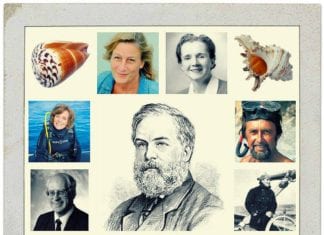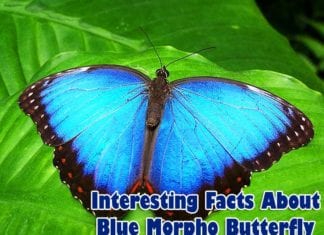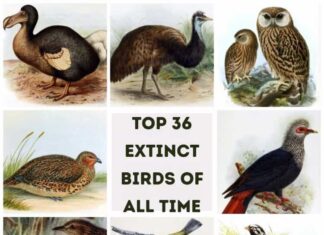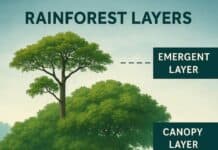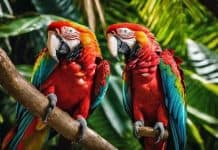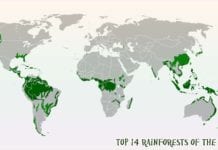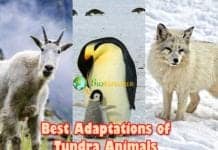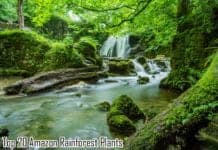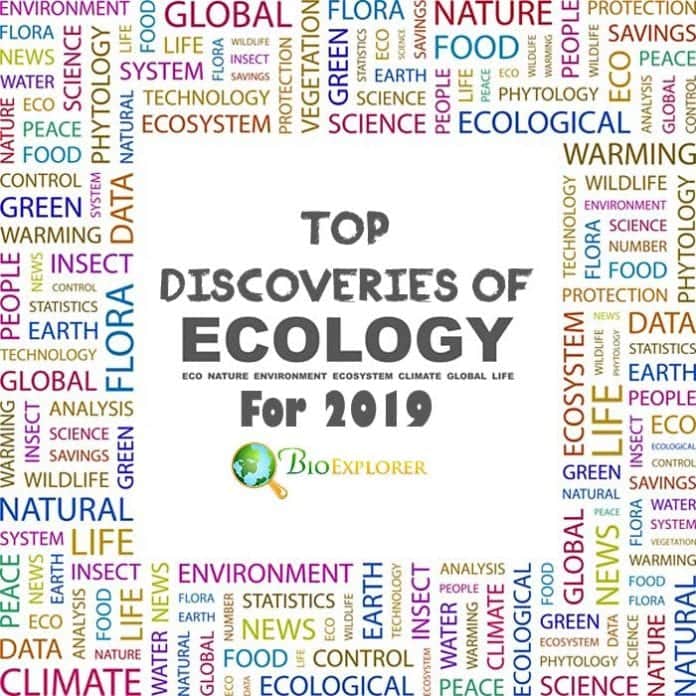
Discoveries in Ecology 2019: Due to climate change and destructive human activity, news in the ecology area in 2019 is quite contrary. For instance, the survey undertaken in 2019 has shown that 40% of land plants are becoming rare and vulnerable.
The increase in temperatures affects not only plants but multiple animals from Emperor penguins, who can no longer hatch their eggs in their usual haunts to typical fruit bats, which were previously considered immune to human activity.
But there is hope: human assistance can also help various ecosystems – even the corals of the Great Barrier Reef. Ecologists also have had some success with a better understanding of the environment with the help of mathematical models.
Though most news is not ideal, we still know significantly more about the dynamic relationships between organisms than previously – and here we would tell some of the most promising discoveries in the field.
Discoveries in Ecology 2019
Here are the top 10 discoveries in Ecology 2019.
The disappearing penguins: a colony of Emperor penguins has dwindled dramatically in only three years [United Kingdom, June 2019]
We associate Antarctica with its beautiful non-flying birds – penguins. But climate change is influencing their life negatively, and we are now seeing its devastating impact first-hand.
A group of researchers has been monitoring through satellite image the life of several colonies of Emperor penguins, including a colony at Halley Bay. For the last three years, they have noticed several negative changes:
- The penguin colony could not successfully breed chicks for three years straight.
- The problems with breeding have started since September 2015.
- In 2015, there was a particularly stormy period connected with strong El Niño in the last 60 years.
- After the storm’s impact, the ice in the area has become fragile and breakable, making it impossible for birds to incubate their eggs.
- As a consequence, Emperor penguins have begun to abandon the site and move to the nearby Dawson-Lambton colony.
- The latest images of the colony of Halley Bay that used to be the second-largest colony of Emperor penguins in the area have shown virtually no birds.
This data is a good illustration of the impact that climate change has even on the farthest areas on Earth. Though Emperor penguins are by no means extinct at this point, they are becoming threatened due to changes in ice properties and temperatures.
![]()
Even bats are not immune to extinction: common fruit bats are also suffering from urbanization, study finds [Singapore, December 2019].

Usually, when experts in ecology and biodiversity make prognosis concerning the current sixth extinction, they explain that biological diversity would decline, leaving only the most resilient and robust species.
A recent study done by researchers from the University of Singapore has shown that some of the species considered resilient still suffer significantly from urbanization and human activity.
The team, under the leadership of Dr.Balaji Chattopadhyay, studied the changes in the population and genetic diversity of the Sunda fruit bat (Cynopterus brachyotis).
- The Sunda fruit bat is common in Singapore, a highly urbanized region.
- This bat species is crucial for its ecosystem. It is essential for both pollinating and dispersing seeds for the plants.
- The researchers have compared the DNA samples of the bats collected and preserved from the 1930s up to today.
- The researchers have compared around 634 million DNA reads and have reconstructed the changes in the bat’s demography.
- According to the data obtained by sequencing and modeling, the Sunda bat population was experiencing a progressive decline since 1, 600 years ago, which probably coincides with the appearance of Homo sapiens in the region.
- There was a recent genetic bottleneck around the 1940s.
- A genetic bottleneck decreases the genetic diversity of the population, making it vulnerable to rapid changes in the environment.
This data suggests that even those species that have evolved to co-exist with Homo sapiens are still experiencing negative influence due to human activity and are equally vulnerable to climate change, fragmentation of habitats, and other anthropogenic influences.
![]()
An ocean is not a desert when it comes down to microbes [USA, December 2019]

Usually, the ocean’s highest level of diversity is observed in the areas closest to the shores, in the warm, shallow water. The vast swaths of deep oceans are considered less diverse.
However, this view does not account for the species not seen with the naked eye – mostly microscopic prokaryotic organisms. These small prokaryotes play an essential role, being the lowest step in the ecosystem that provides all the other, more significant organisms with resources.
A scientific team researched at the Wellesley College, Massachusets, shows how underestimated the ocean microbiome is.
- The researchers have taken 28 samples from the tropical and subtropical regions of the Atlantic and Pacific oceans.
- The researchers have employed single-cell genomics to analyze the genetic diversity of the prokaryotes in the obtained samples.
- 12, 715 individual cells belonging to the prokaryoplankton were sequenced in total.
- The sample of 0.4 mL of seawater contains at least a fifth of all genetic diversity available in the ocean.
- This level of diversity is probably due to the ocean currents, making the ocean the “melting pot” of microplankton.
This project created an extensive dataset for marine biologists and ecologists that potentially helps them learn the role of microorganisms in marine ecosystems. The researchers also hope to find novel, previously unknown photosynthetic organisms.
Suggested Reading:
Top 15 Famous Marine Biologists
![]()
Calling the fish back: the scientists have found a novel way to attract fish to dead reefs and restore ecosystems [Australia-UK, November 2019]
The seas are not only teeming with unseen life -but they can be noisy as well. For instance, healthy coral reefs can be full of sounds that only the fish can perceive. Coral reef ecosystems are some of the most diverse on Earth, and preserving its biodiversity is crucial.
With the plight of coral bleaching, it is becoming even more important to invent a way of restoring reefs and supporting the communities that develop there.
An international team of marine specialists from the UK and Australian universities have suggested a simple and original approach; to attract fish back to reefs – they need to recreate the same sound the fish hear when reefs are healthy.
- The researchers had compared patches with corals with the addition of acoustics and without it.
- On the patches with the addition of sound, the fish community was more extensive and more diverse.
Fish perform multiple roles on a reef. The more species the community on the reef has, the healthier the coral will grow.
Fish perform multiple roles on a reef. The more species the community on the reef has, the healthier the coral will grow. If the affected reefs are protected, and the conservationists also add acoustic “advertisements” for attracting fish, the reef restoration can be quicker and more effective.
![]()
The past repeats itself: coral rejuvenation seen only in fossil records observed in modernity – for the first time [October 2019]
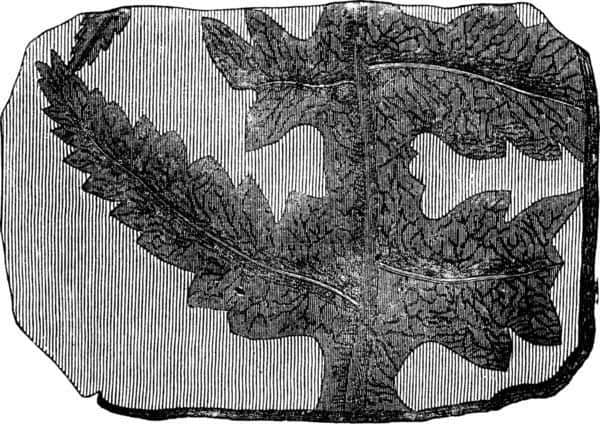
Coral reefs are especially sensitive to fluctuations in temperature, such as heatwaves. Temperature spikes may result in death for corals even without their other blight – bleaching.
A team of researchers at the University of Barcelona has been monitoring the state of coral populations in the Mediterranean reserve in Columbretes Islands on the Spanish coast.
They have chosen a common species, Cladocora caespitosa, which is considered a relict and is probably evolutionally elated to both tropical and Mediterranean corals.
- The observations of the population dynamics were held for 16 years.
- The corals in the area were dying at an alarming rate. For instance, 25% of the whole population was destroyed by the highest heatwave observed in 2003.
- Some polyps were shown to undergo the process of rejuvenation:
- The coral shrinks within its skeleton.
- In this new reduced state, the coral can leave the skeleton if necessary.
- When the temperatures return to normal, the coral grows to the standard size, reproduces by budding, and repopulates the reef. .
- Previously, this rejuvenation process was only recorded in the fossil record.
It remains to be determined how effective this survival process is for the corals. However, it still brings hope that at least some corals may overcome the stress of global warming.
![]()
The slow recuperation of Amazonian forest [Brazil-UK, December 2019]
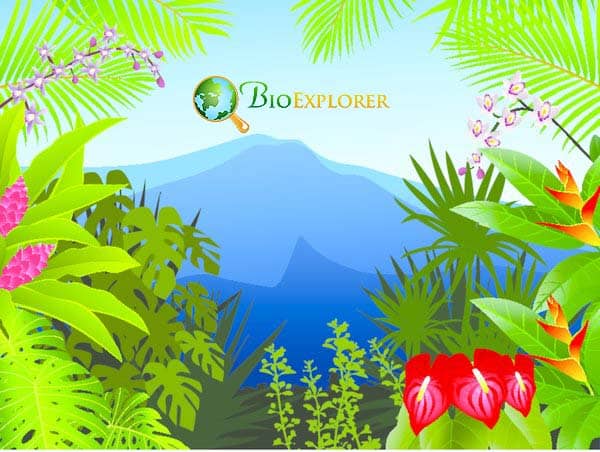
When the trees in the forests are cut, there is hope that the new trees would grow in their place and absorb the carbon dioxide from the atmosphere.
These new forests are called secondary forests. The scientists calculate their contribution to building models of the progression of climate change.
A study undertaken by a team of scientists from Britain and Brazil in the Amazonian forest has shown that these models would need to be recalculated:
- The study was focused on one of the older secondary forests in the Brazilian Amazon.
- The changes in the Amazonian forests were analyzed based on forest inventories undertaken and recorded from 1999 to 2017.
- The researchers compared the level of carbon uptake, diversity, and resistance to drought in secondary forests and primary forests.
- In secondary forests, the ability to absorb carbon and the overall species diversity was constant in the studied period.
- At the same time, both of those parameters were approximately 50% higher in primary forests.
- Moreover, secondary forests were more vulnerable to dry climate and drought, and trees were more likely to die in the “newer” forests in conditions where water is scarce and the temperatures high.
This new analysis shows that even allowing the forests to re-grow does not restore their full ability to lower carbon dioxide from the atmosphere, which is crucial for counteracting climate change.
The primary, untouched forests are still more resilient and productive than the forests composed of the younger trees.
It means two important things for the future: the models describing the progression of climate change have to be changed. The destruction of the forests has to be slowed down to counteract the adverse effects of forest destruction.
![]()
You don’t have to be a stranger to have destructive tendencies: native aquatic plants can develop properties similar to invasive species in certain conditions [USA, August 2019]
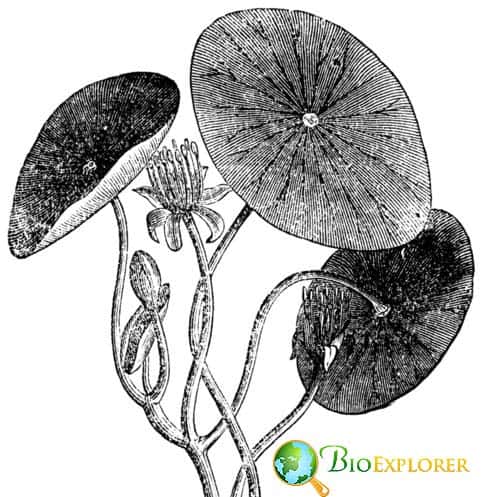
Invasive species are a group of organisms that have specific dangerous characteristics:
- They are not native to a particular area.
- They tend to grow aggressively.
- They outcompete local species and form monocultures, decreasing the diversity of an ecosystem and changing the balance.
Invasive species can be found in many groups of organisms, from plants to mammals. Some authors point out that even Homo sapiens at least used to be an invasive species thousands of years ago.
However, it happens that an organism does not have to be introduced to develop dangerous properties.
In the course of several horticultural workshops, Lynn A. Gettys, an invasive plant specialist, has described several native plants that can grow aggressively, drastically changing the balance in an aquatic ecosystem.
- Aquatic ecosystems can be particularly vulnerable to invasive species, such as water hyacinth.
- Several aquatic plants native to North America, such as frog’s bit andyellow waterlily can grow aggressively and outcompete other species.
- These species can be dangerous both to natural and human-made ecosystems.
- The issue is complicated by the fact that many of the native species with such tendencies play essential roles in their corresponding ecosystems and are often used in reserves and parks.
It is becoming clear that native species can also cause similar damage to invasive plants. Native species can “go rogue” when they are reintroduced by specialists, or in response to interventions against invasive species. This means that the term of “invasiveness” itself has to be reconsidered, and the management of both invasive and native plants has to be better thought out.
![]()
Humans can help, too: human management can save butterflies and rare plants from hurricanes [USA, December 2019]

A research group from North Carolina University was studying the recovery of pine forests that grow on rocklands in south Florida following the destruction caused by the hurricane Irma.
- The researchers compared two areas: Everglades National Park and National Key Deer Refuge, Big Pine Key.
- In some of the plots in both reserves, the managers undertook controlled burns or removed some understory.
- Everglades Park was only affected by strong winds, while Big Pine Key suffered from storm surge as well.
- It was shown that in both reserves, human-managed plots were recovering better than the unmanaged area.
- This effect was especially visible in Pine Key, where the damage was severe due to flooding. The managed plots had a considerably higher recovery rate compared to unmanaged areas.
- The researchers think that one of the main contributors to the recovery process is pineland croton. This shrub can re-sprout and spread seeds after burning incidents.
- Pineland croton is especially crucial because it is crucial for survival for two endangered butterfly species -Florida leafwing and Bartram’s scrub-hairstreak.
- By promoting pineland croton re-sprouting through management, it has become possible to make the pine forests more resilient and to protect rare butterfly species.
- CurrentBartram’ sam’s scrub – hairstreak was not observed in more affected Big Pine Key area but is still present in Everglades.
Suggested Reading:
Top 21 Facts About Blue Morpho Butterfly
At least this particular area can benefit significantly from human management, which promotes resilience and helps preserve biodiversity.
![]()
How to find Australia beloved animals: researches use modern technology to trace and find koalas [Australia, December 2019]

Collaboration between researchers from Queensland University of Technology and ACEMS has resulted in unique approach to help establish the location of one of the iconic Australian animals – koalas.
- The researchers obtained information about koalas location based on:
- Thermal imaging with the help of drones.
- Ground survey records
- This data was complemented by analysis of the area by experts in the field of koala zoology undertaken with the help of virtual reality that displayed the surveyed information in the form of 3D immersive landscapes.
- Based on all of these sources, mathematical models were built predicting possible localities where koalas may hide.
Suggested Reading:
Top 21 Facts About Blue Morpho Butterfly
This approach has resulted in a model that can predict koalas’ distribution with higher confidence. Considering the recent Australian bushfires that severely affected koalas in the region, it is especially important.
![]()
Birds of feather flock together: how rare animals form communities to survive [Sweden-Spain, December 2019]
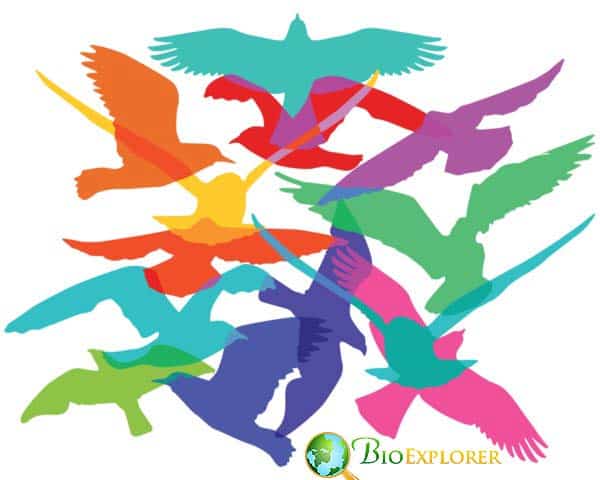
It was thought that the relationship between rare and competitive species is straightforward: the more successful species outcompete the ones that are rarer, driving them to extinction.
A comprehensive survey undertaken by Spanish and Swedish scientists has uncovered a new type of behavior for rare species.
- The researchers analyzed more than 300 diverse communities worldwide.
- The communities included various species from plants to corals and insects.
- Based on the collected data, mathematical models were built.
- According to the models, more abundant species affected less abundant ones negatively.
- On the other hand, species that tend to be in the minority also tend to co-exist together, forming small communities.
Suggested Reading:
Top 36 Extinct Birds From Millions To Zero!
The existence of such rare species “ghettos” where these species promote each other’s survival is a novel finding and calls for more research on the subject.
It can influence how we can organize conservation efforts.
![]()
The current ecology research does not paint the happy picture of global biodiversity. The recent disasters of 2019, such as Australian bushfires: the habitat of koalas is destroyed, and they suffer from combined effects of infections and loss of food and homes.
Decreases in diversity are observed in multiple areas, from wetlands of the Mediterranean to Arctic lakes and rivers. In this list, we did our best to shift the focus to new knowledge and new approaches that may counteract this devastation.
New ideas, such as acoustic advertisements for coral-linked fish to new ways to counteract rabies with the help of vampire bats, may shift the balance towards positive change – hopefully.
![]()


